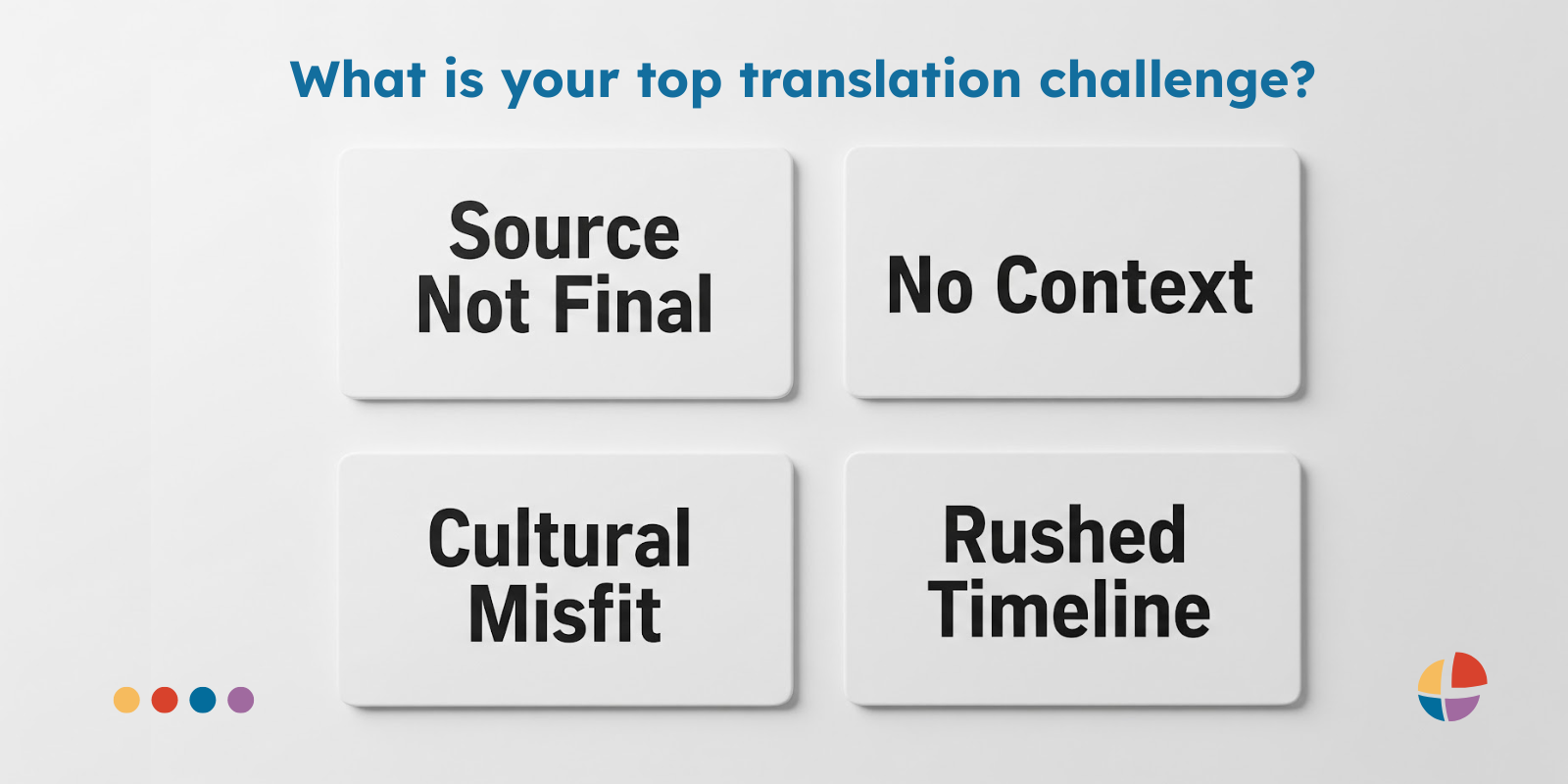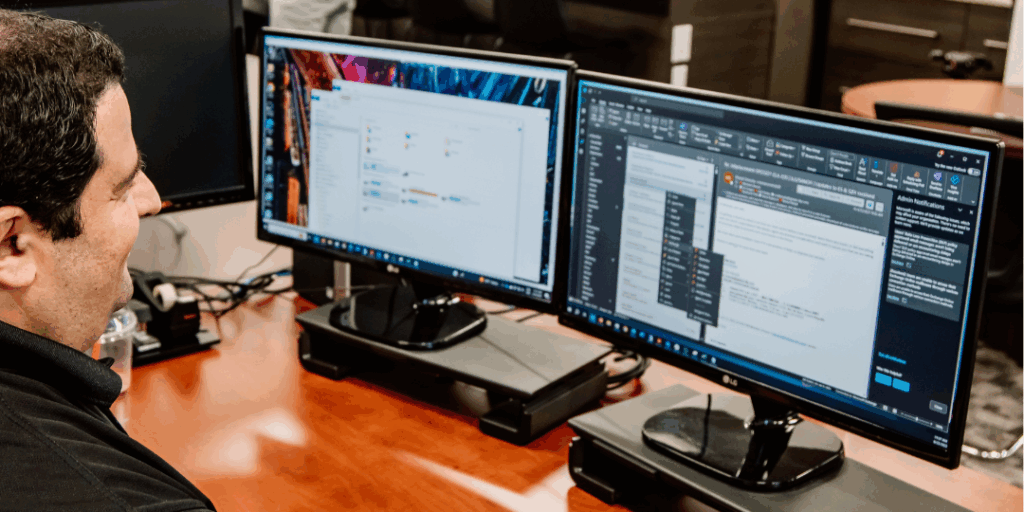
Translation projects succeed when teams anticipate challenges (quality, culture, timelines, and consistency) before they appear. This guide explains the top translation challenges businesses face and provides practical fixes you can apply immediately. Interpro pairs proven workflows with expert linguists so your content is accurate, on-brand, and culturally appropriate.
If you’ve ever managed a localization project, you know it’s more than swapping words between languages. It’s about connection, culture, and clarity. As a seasoned project manager, I’ve seen where things go wrong; and more importantly, how to prevent it. This blog draws directly from my hands-on experience to help you avoid the most common translation pitfalls and set your next project up for success.
Topics Covered in This Article:
- What makes translation projects fail and how to avoid it
- How to manage timelines, updates, and quality control
- The truth about machine translation and consistency tools
- Pro tips for better collaboration with your provider
What Are the Top Translation Challenges?
After managing translations for over 20 years, these are the top translation challenges most companies face.
1. Starting Before Finalizing Content
One of the most frequent—and costly—issues I see is content updates mid-project. Translation rework introduces errors, delays timelines, and drives up costs. Always finalize your source content before translation begins.
2. Missing Context = Mistranslation
Your team may know what “it” refers to, but your translators won’t. Provide audience details, tone, and any supporting material upfront. The more context we have, the better your message will land across languages.
3. Cultural Misfires
A grammatically correct translation can still offend or confuse if it ignores cultural nuance. Idioms, humor, and visuals don’t always translate. Localization ensures your content feels natural in each target market.
4. Time vs. Quality
Rushing translation often puts pressure on the translation team. Build realistic timelines that account for quality assurance, internal reviews, and formatting. High-quality localization can’t be rushed.
Now Let’s Answer Your Most Common Questions
We know translation can be complicated which is why we’re here to help! We’re always happy to answer questions about translation, but here are the most frequently asked questions.
1. “Why does translation take so long?”
Because it’s more than just words. Our linguists consider tone, culture, formatting, and terminology. Add in quality checks and client reviews, and timelines reflect the care your content deserves.
2. “Why not just use AI or machine translation?”
Machine translation has its place for rough drafts or internal use but for public-facing, nuanced, or technical content, you need human expertise. We’ve seen too many clients spend more fixing poor MT than if they’d used a professional from the start.
3. “How do I ensure consistency?”
We use translation memory, glossaries, and style guides to maintain consistency across documents and languages. If you’re managing large volumes of content, this is essential.
4. “What formats can you work with?”
From Word docs to Storyline, Vyond videos to JSON files, we handle it all. Talk to us early so we can determine the most efficient workflow for your files.
5. “How much will this cost?”
Pricing depends on the document length, language pair, and technical needs. We always provide detailed, transparent quotes—no hidden fees.
7 Proven Strategies to Ensure Seamless Translation Projects
- Plan Ahead: Give your team and your provider time to do it right.
- Share Background: Include your audience, brand tone, and intended use.
- Stay in Touch: Ongoing communication reduces errors and speeds up delivery.
- Set Review Time: Schedule time post-delivery to review and give feedback.
- Use Professionals: Bilingual employees and free tools can’t match trained linguists.
- Create a Glossary: Especially helpful for technical or branded terms.
- Think Beyond Translation: Consider localization and transcreation when adapting creative or cultural content.
A Proactive (Not Reactive) Approach to Translation Strategy
From misaligned expectations to cultural missteps, translation challenges can jeopardize your message and impact. But with thoughtful proactive planning and the right partner, you can avoid the most common pitfalls.
At Interpro, we bring decades of experience to help you communicate clearly, consistently, and culturally across languages. Whether you’re launching global training or translating regulatory documents, we’re here to guide the process and protect your brand.
Ready to get ahead of your next translation project?
Interpro supports your translation workflow to ensure your content is accurate, engaging, and fully functional in any language.
Talk to Interpro about your translation & localization plan.
FAQs
What makes translation projects fail?
Unfinalized source content, missing context for linguists, cultural misalignment, and compressed schedules that remove QA steps.
How can I prevent rework?
Finalize source before kickoff, approve terminology and a DNT list early, and establish change-request rules and review windows.
Why not rely on machine translation for everything?
MT is useful for drafts, but public, nuanced, or technical content needs expert linguists to ensure accuracy, tone, and cultural fit.
Where does QA fit in the process?
After translation and editing: linguistic QA, functional checks, DTP proof, and in-country review protect quality and brand integrity.
Explore Services
Consulting • Translation • eLearning • Video & Multimedia • Document
References
ISO 17100:2015 – Requirements for translation services
Category: Translation
Tags: Localization, translation challenges, translation strategy
Service: Translation Services
Don't forget to share this post!
Stay Updated with Interpro
Subscribe to our newsletter for the latest updates and insights in translation and localization.







